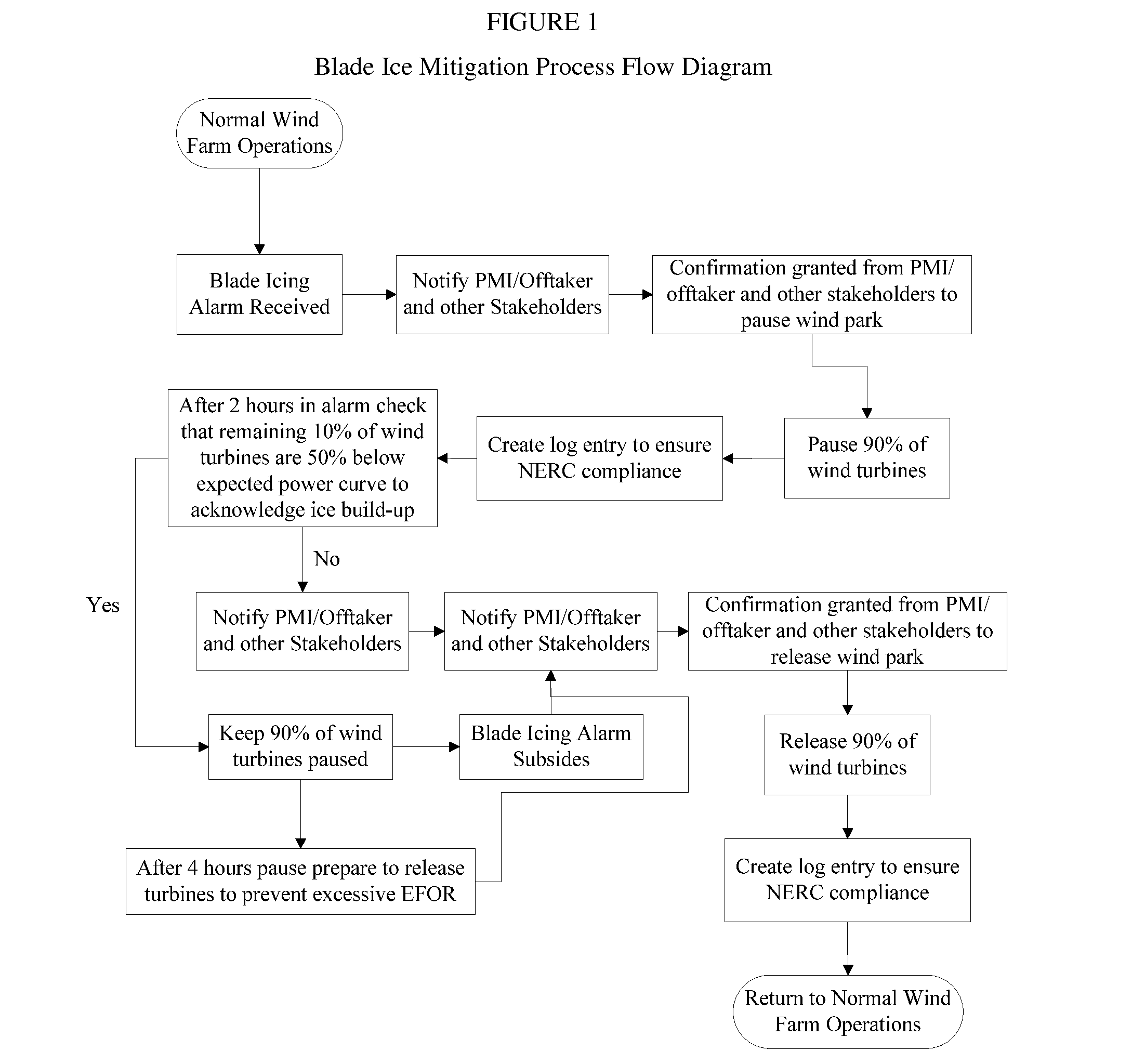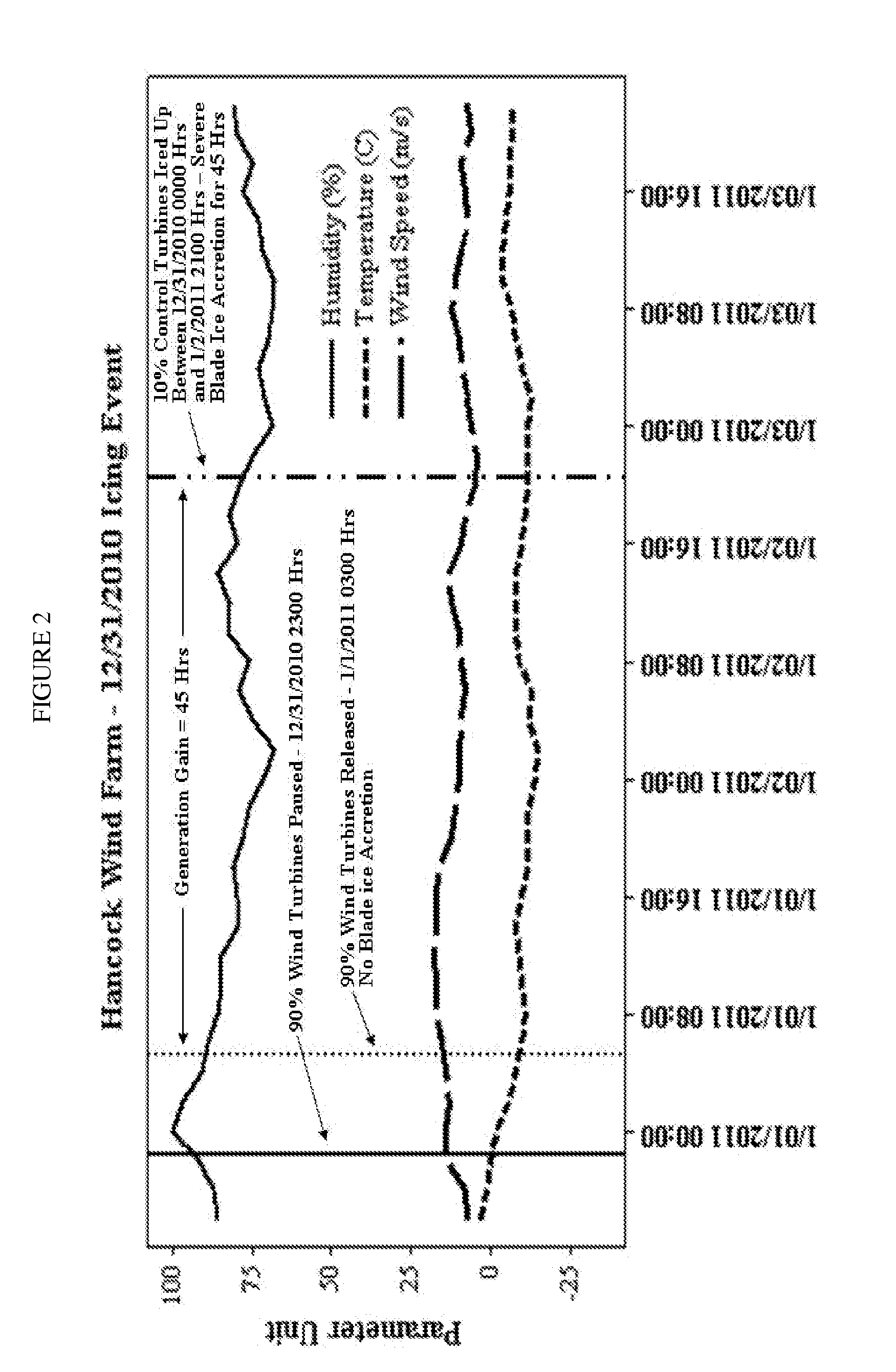Methods for predicting the formation of wind turbine blade ice
a technology ice formation, which is applied in the field of wind turbine blades, can solve the problems of loss of efficiency, ice formation on turbine blades can contribute, and cost effective power generation
- Summary
- Abstract
- Description
- Claims
- Application Information
AI Technical Summary
Benefits of technology
Problems solved by technology
Method used
Image
Examples
Embodiment Construction
[0043]The present invention relates, in part, to wind turbines and, more particularly, to ice formation and / or accumulation (icing) on the blades of wind turbines. The present invention also relates, in part, to logistic regression models that are useful for predicting ice formation and / or accumulation on wind turbine blades and methods of their use in optimizing performance of wind turbines in the presence of adverse local weather conditions. The invention is also directed in some aspects to the reduction and / or prevention of ice accretion on wind turbine blades, preferably in proactive response to predictions of a future icing event, preferably within hours, more preferably within one hour. Model predictions are based, at least in part, on logistic regression models for predicting ice formation and / or accumulation on wind turbine blades in view of current weather conditions such as wind speed, % relative humidity and temperature, preferably wherein the measurement of such weather ...
PUM
 Login to View More
Login to View More Abstract
Description
Claims
Application Information
 Login to View More
Login to View More - R&D
- Intellectual Property
- Life Sciences
- Materials
- Tech Scout
- Unparalleled Data Quality
- Higher Quality Content
- 60% Fewer Hallucinations
Browse by: Latest US Patents, China's latest patents, Technical Efficacy Thesaurus, Application Domain, Technology Topic, Popular Technical Reports.
© 2025 PatSnap. All rights reserved.Legal|Privacy policy|Modern Slavery Act Transparency Statement|Sitemap|About US| Contact US: help@patsnap.com



